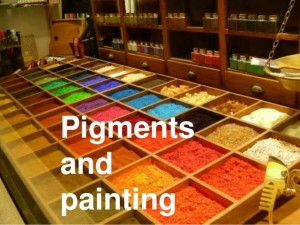
Pigments are used in a wide variety of segments from the designs on your clothes to the colour of your shoes and bedsheets. But it is not complete yet, pigments are also used to color building material such as vinyl and brick cladding, plastic, medicine, cosmetic, the books and magazines we read, even the food we eat.
Pigments for paint
Without any doubt, food coloring is different from the pigments in paints. The natural dyes are used for coloring clothes made from cotton or wool; they are not shiny and brighter as different pigments. In the case of food coloring it should be suitable for human use; on the other hand, clothing colors need to be from a source that will not affect your skin. Pigments for paint used for many food coloring come from vegetables, fruits and herbs.
Pigments that are utilized to paint things such as airplanes and cars to make them look realistic and attractive differ from the pigments used to paint your house or used in cosmetic items. Pigments that are used in artistic pursuits such as modelling or painting can be taken from any store supplying art-supply.
The need for stringent regulatory requirements has impacted the paint formulations prompting to their development and evolvement of new methods that agree to the forced regulatory demands. Pigments that are less harmful and nature-friendly have come into existence. All these pigments for paints have perfectly done their functions in the paint industry.
Pigment Red 170
Pigment Red 170 is a brilliant and very powerful bluish red pigment that offers high transparency and lightfastness. There are two grades Pigment Red 170 one is F5RK and other is F3RK. Both of these grades are halogen-free, F5RK is transparent bluish and F3RK is high hiding power yellowish. The applications of pigment red 170 are polyolefins and fiber.
One classification of pigments that show decent tentorial features coupled with reasonably good speed to heat, solvents and light are the naphthol reds which are utilized in masonry paints and latex emulsions. Every time ecological, economic and regulatory considerations are increasingly impacting the composition and combination of paint formulation. This had turned to the growth of decent methods that fulfil the thorough placed on the paint business.
- Cost-effectiveness
- Universal application
- Stability
- Excellent dispersion properties
- Great anodic corrosion protection in solvent and water-based systems
Some of the natural pigments created synthetically are the azo-colours which incorporate the red, orange and yellow color. Quinacridone which has a lightfast violet-red pigment, the phthalocyanine which has blue and green range, etc. Lake pigments are dyes that do not have the quality of solvency for specific fluid thinners. Acid red and acid black are some of the examples of dyes. Inorganic naturally produced pigments are the siennas, umbers, ochres and synthetic ones involve titanium white, cadmium orange/red/yellow and cobalt blue.
We at Vipul organics always offer high-quality and safe pigments used any product increases the value of brands. We have a huge amount of resources in producing pigment green, organic pigment, pigment blue.